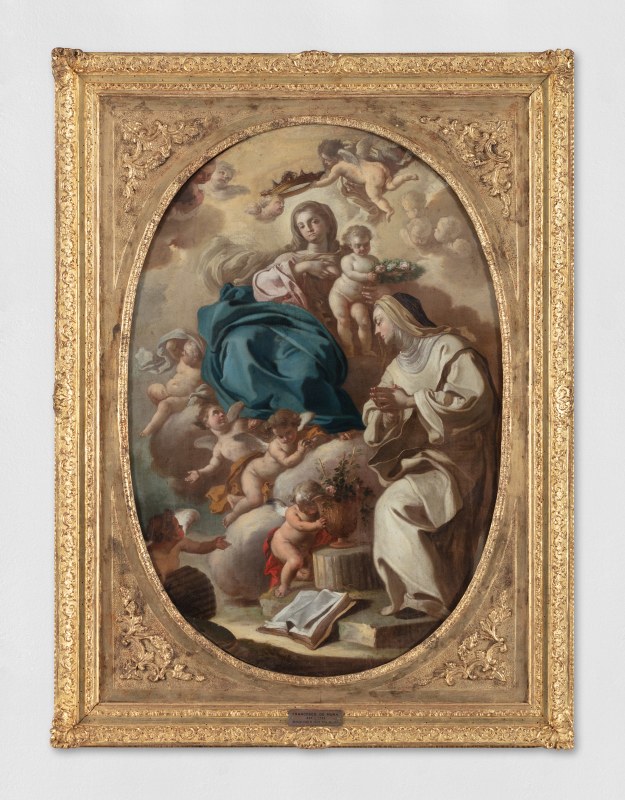-
Biography
Francesco De Mura (Naples, Italy, 1696 – 1782)
Born in Naples in 1696, Francesco De Mura showed a strong aptitude for drawing from an early age. He began his training in Domenico Viola’s workshop, before moving to Francesco Solimena’s atelier, where he remained until 1730.
In 1713, he painted his first public work, a Dead Christ on the Cross with St. John for the Neapolitan church of S. Girolamo delle Monache in Mezzocannone. Even though this was an early piece, the strong influence of Luca Giordano on his style was already apparent.
As his talent grew, so did the number of commissions he received, including those from the affluent Bartolomeo De Maio for his splendid palace in the Sanità district.
In 1727, he married and moved to the hill of S. Eframo Nuovo, where, two years later, he collaborated with his master to produce the drawings for the engravings in the volume Le tragedie cristiane (The Christian tragedies). During this time, he also worked on the canvases and frescoes for the Chapel of St. Nicholas of Bari, including frescoing the main vault.
The Jesuits, for whom he worked extensively, encouraged him to send his works beyond Italy. Having achieved considerable fame, between 1731 and 1732, he painted an Epiphany that became a notable example of the new style, closer to Rococo.
Important commissions continued to come his way: until 1745, he worked in several religious projects for the Benedictines of Montecassino Abbey and for the Neapolitan church of Ss. Severino and Sossio.
In the same years, he also worked for the King of Sardinia.
From 1750 to 1751, he focused on the decoration of the Jesuit church of the Nunziatella in Naples, where he created The Annunciation, a monumental and intricately structured work, surrounded by a rich decorative ensemble.
The following years were challenging for the city, marked by the eruption of Vesuvius in 1754, a plague outbreak in 1764, and another eruption in 1767. The Jesuits were expelled from Naples, and in this turbulent atmosphere, he produced en plein air Scene di Terrore (Scenes of terror), one of his finest examples of motion painting, now housed in the Pinacoteca del Pio Monte della Misericordia.
In 1770, for personal reasons, he resigned from his position as director of the Royal Academy of Nude, although it continued to grant him a salary until his death.
His final works date back to 1775, when he created a canvas for the Ss. Apostoli in Naples and an overmirror for the king’s bedroom at the Royal Palace of Caserta.
He died in Naples in 1782.
Photo UniCredit Group (Sebastiano Pellion di Persano)
-
Works
Francesco De Mura: Italian, 1696-1782
A Neapolitan artist of the late 18th century, he was a leading exponent of Italian Rococo.Join our mailing list
* denotes required fields
In order to respond to your enquiry, we will process the personal data you have supplied in accordance with our privacy policy.



